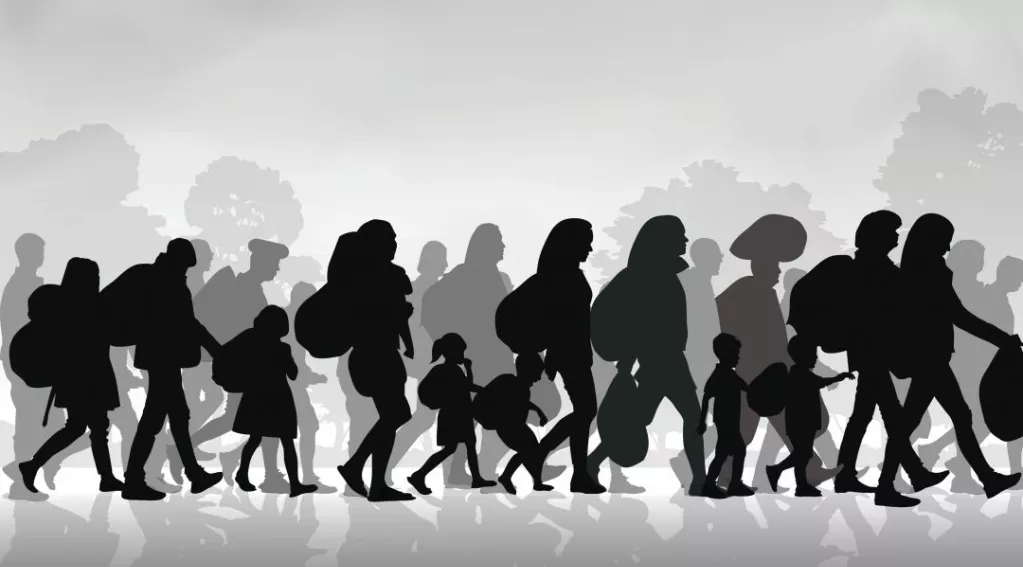Canadian Government Cracking Down On Asylum Laws

More than two years after his infamous #WelcomeToCanada tweet declaring his nation open to all, Prime Minister Justin Trudeau is facing a border crisis of his own due to an “elevated number” of refugees and illegal border crossers. So, his government is moving to close a legal loophole often exploited by those claiming asylum.
The government’s 2019 budget includes a provision which would prevent refugees from seeking asylum if they made similar claims in countries with whom Canada has an immigration information-sharing agreement, such as the U.S. and U.K.
It stipulates that “failedasylum claimants who entered into Canada at irregular crossings or betweenofficial ports of entry will also be removed on a priority basis.”
The 392-page omnibus budgetbill also calls for increased spending on enforcement to deal with the rise inasylum seekers and illegal border crossings that has “challenged the fairnessand effectiveness of Canada’s asylum system.”
One of the reasons why morealiens are trying to cross illegally is because the Safe Third CountryAgreement between the U.S. and Canada says asylum-seekers are prohibited fromclaiming refugee protection in Canada if they arrive at an official bordercheckpoint from a safe country, such as the U.S.
According to Globalnews, an internal memo prepared for Canada’s immigration minister prior to a January 2018 meeting with then-Secretary of Homeland Security Kristjen Nielsen showed the Canadians were increasingly concerned the effectiveness of the agreement, which it maintained was “no longer working as intended.”
In an effort to sidestep thelaw, the memo said asylum seekers were “crossing into Canada between ports ofentry where the agreement does not apply. This has brought to our attentiongaps that may be creating a pull factor for people to cross illegally intoCanada.”
Like its southern neighbor,the Canadian government has been struggling to deal with the surging numbers ofillegal immigrants in the last few years, specifically financing enough immigrationjudges to respond to asylum claims.
The 2018 budget allocated an additional $72 million to the Immigration and Refugee Board of Canada (IRB) over two years to increase capacity so they can deal with the growing number of refugee protection claims. Last year, there were almost 30,000 preapproved refugee arrivals, which is distinct from asylum claims.
Just as radical activistsand open-border advocates in the U.S. have criticized efforts to enforce thenation’s immigration laws, groups in Canada fired up their rhetoric andfear-mongering too.
“We are shocked that the government would use an omnibus budget bill to strip away human rights protections from vulnerable refugee claimants,” said Maureen Silcoff, Litigation Committee Chair of the Canadian Association of Refugee Lawyers. “Removing these protections will result in costly legal challenges, and is bound to create further delay and confusion in the refugee system.”
One could assume from ofthose “costly legal challenges” would be lodged by Silcoff and her associates.
Since the surge of illegal crossings began in 2017, the Canadian government has also struggled to house the growing numbers. They were forced to open up Olympic Stadium in Montreal as a temporary shelter, and the Canadian military was tasked with building other shelters to process the asylum seekers crossing into Quebec.
The problem of illegal border crossings goes both ways. Data released in March by U.S. Customs and Border Protection (CBP), shows 4,316 people were apprehended along the border last year, up from 3,027 in 2017 and 2,283 in 2016.
Although the U.S. has a less-than-cooperative partneralong the southern border, perhaps there is some hope for closing legalloopholes and stopping violations of immigration law on both sides of thenorthern border.

